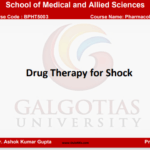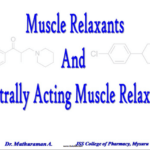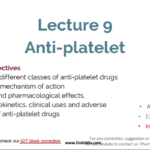These are notes regarding pharmacovigilance subject in that point was importance of safety monitoring of medicine. 8th sem b.pharm.
IMPORTANCE OF SAFETY MONITORING OF MEDICINE
- Drug safety monitoring is the process of identifying expected and unexpected adverse reactions resulting from the use of medicines in the post-marketing phase.
- It is a risk mitigation exercise in which the ADRs caused by therapeutic drugs, biologicals or devices can explored, prevented or minimized.
Importance of safety monitoring of medicine:-
Before releasing into the market, a medicine is tested using a limited population ranging from 500 to 5000.
Once the medicine comes into the market it becomes legally available for consumption by the general population.
The population may be children, pregnant women, patients suffering from other diseases and the elderly.
It may be given separately or in combination with other medicines.
Thus, the drug is taken in different therapeutic situations and physiological conditions.
It is therefore, very much necessary to observe and record the effectiveness and safety of the medicine under real-life conditions. A close and effective monitoring is required to assess the risks associated with the use of medicines.
In fact adverse effects, interactions with foods or with other medicines and risk factors are to be noticed only during its real use over the years.
Flow chart: – Different phases of clinical examinations
Table: – Examples of Serious Adverse Reaction
Year | Drug | Adverse Reactions | Remark |
1950 | Chloramphenicol | Aplastic anaemia | Still being used |
1961 | Thalidomide | Phocomelia | National disaster |
1970 | Clioquinol | SMON | After 30 years of use |
1970 | Diethylstilbestrol | Adenocarcinoma Of the cervix | In utero exposure |
1975 | Practolol | Oculo-mucocutaneous syndrome | 5 years after marketing |
1976 | Zomepirac | Anaphylaxis | Withdrawn |
1978 | Phenformin | Lactic acidosis | Withdrawn |
1980 | Ticrynafen | Deaths from liver disease | Detected after 5 years of suspection |
1982 | Ticrynafen | Hepatitis | Withdrawn |
1990 | Etretinate | Birth defect | High risk of birth-defect, narrow therapeutic index |
1999 | Astimizole | Arrhythmias | Because of interaction with other drugs |
2004 | Rofecoxib | Myocardial infarction | Withdrawn |
2007 | Inhaled insulin | Long term safety, high cost | Withdrawn in the UK due to poor sales caused by national restriction on prescribing, doubts over long term safety. |
2010 | Rosiglitazone | Heart attacks | Withdrawn in Europe |
2011 | Drotrcoginalfa | Prowess -shock study | Withdrawn by Lily |
2012 | Rimonabant | Depression, risk of suicidal tendencies and seizures | Withdrawn |
2012 | Sibutramines | Heart related side effects | Banned |
A close and effective monitoring is required to assess the risks associated with the use of medicines. This is possible only when all the stake holders extend their hands in the field of pharmacovigilance to meet the challenges. To make such collaboration successful the effective and comprehensive systems are required. The typical limitations include lack of training, resources, political support, and scientific infrastructure. For future development of the science and practice of pharmacovigilance, understanding and knowledge of tackling are essential. In general, the stakeholders who need to collaboratively work are;
- Government
- Industry
- Hospitals and academia
- Medical and pharmaceutical associations
- Poisons and medicines information centres
- Health professionals
- Patients
- Consumers
- The media
- World Health Organization










